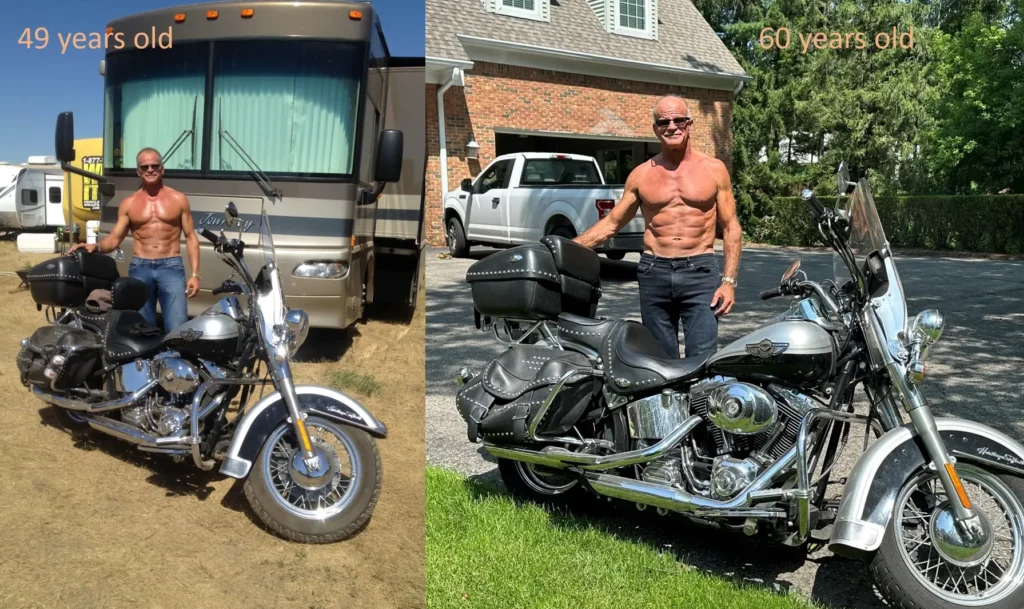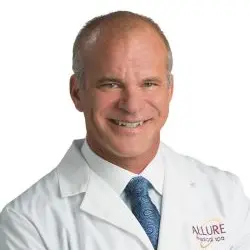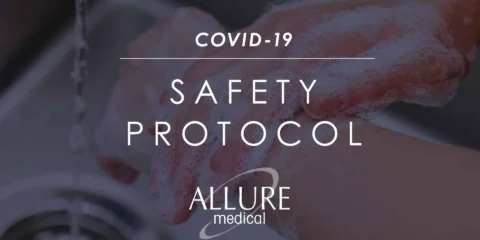How do we measure age (besides the calendar) in humans, and can we slow aging down or reverse it?
“Anti aging”, “longevity,” and other wellness terms have been used to describe mitigating the effects of aging on the human body.I have written some previous posts on how we can potentially add healthy years to our lives beyond what is traditionally offered in healthcare today.
Four tiers towards a longer, healthier life:
Tier 1: Traditional healthcare and wellness.This includes annual screening with your primary care provider, cancer screening, eating healthy, exercising, taking supplements appropriate for you, and managing stress.It may consist of sauna, meditation, cold plunge, functional medical care, and concierge medicine.Your health insurance will cover parts of this.
Tier 2: Regenerative medicine.This is the next step, and insurance will only cover some of it.
A classic regenerative service includes PRP and stem cells (or cellular medicine) for damaged tissues such as joints and soft tissues.Studies have shown that untreated major joint arthritis (such as the knee) leads to a 1.8-3.5 year decreased survival.
Hormone replacement therapy (when started within 10 years of menopause for women and within a reasonable time period of andropause for men) can add about 10% to life expectancy.Similar life extension is expected in men with low testosterone who are offered testosterone replacement therapy,
Apnea, especially severe apnea, is associated with a significantly shortened lifespan if untreated.In the largest USA study, individuals who had sleep apnea at the onset of the study (starting at ages 30-60 years old) were more likely to die (3 times as likely for severe sleep apnea) than those without sleep apnea over a 20-year follow-up period.Numerous studies have shown that treating sleep apnea reduces that risk and lowers the risk of chronic diseases such as Alzheimer’s and cardiovascular disease.With the NightLase® treatment, the tissues in your throat causing sleep apnea (the obstructive type which is by far the most common) are regenerated, and sleep apnea can be markedly reduced.
Venous insufficiency, ranging from varicose veins to advanced disease with skin breakdown and skin ulceration, impacts longevity.To be clear, varicose veins do not shorten your life, but if it progresses to leg swelling, skin changes, and sores on the legs, the resulting impaired mobility affects longevity.
Tier 3: Don’t die of something preventable (also known as “The Big Three”)
Cardiovascular disease includes heart attacks and strokes and is America’s leading cause of death.We spend billions of dollars a year treating cardiovascular disease, yet virtually no effort is spent on early detection, where it can be reversed.
CIMT (Carotid Intima Media Thickness), Cleerly CT angiogram, and CT calcium scores are three methods that can detect cardiovascular disease well before clinical symptoms.These can also detect the presence of cardiovascular disease years before a stress test or invasive angiogram can diagnose the earliest stages of the disease.Heart attacks occur when there is the critical narrowing of blood vessels to the heart, and irreversible damage can occur.Conventional screening (stress tests, etc) is good at this late stage of disease, but advanced screening can identify changes to your cardiovascular system decades earlier.The key to early detection is the knowledge that you are at future risk and plenty of time to make any changes or interventions needed to slow down or reverse disease.
A CIMT is generally around $250-500, CT calcium score around $100, and Cleery around $1,500.Talk to your doctor about which is most appropriate for you.My protocol is to use the inexpensive CT calcium score for low-risk young individuals as it is an affordable, fast screening test, but it is useless for tracking progress.For everyone else, we use CIMT as the first screening point.
Cancer is another preventable risk for a shortened lifespan, and current screening only screens for about 30% of cancers.
You should get routine for cancer (PAP smears, colonoscopy, mammograms, etc.), and there is an option for far more advanced screening.
A full body MRI can detect tumors the size of a peanut, which is the stage they can generally be surgically removed and cured.Once tumors are large enough for your doctor to feel or for you to have symptoms, they are usually very advanced and more difficult to treat, let alone cure.
The full body MRI can’t practically be done at your local hospital.They don’t have the software of protocols.Yet, there are centers around the country that offer these specialized services.We use Bionic Body MRI in MI, and there are other centers throughout the country that offer this service.This can cost anywhere from $1,500 to $3,500.
There is also a recently FDA approved blood test that is called a “liquid biopsy” to detect tiny genetic fragments of tumors from a simple blood test.The test is called Galleri® and costs about $900.This test screens for dozens of cancer types, with the potential to pick up cancers in their earliest stages, before they are detectable by other means.
Neurocognitive decline includes dementia and Alzheimer’s and is a leading cause of dysfunctionand demise in the elderly.Right now, it is diagnosed by observing clinical deterioration and ruling out other causes.But we can detect risk of brain decline before there are any symptoms. Neuroquanative imaging uses an MRI with software to measure the volume of brain tissue and dead space (called ventricles) and compares it to others at the same age.
If someone has a brain volume that is at the lower 10% of the population, they will likely have no overt signs of decline, but they will progress into dementia at an earlier age than their peers.Someone with a brain mass at the 90 percentile of the matched age population is very unlikely to get dementia any time in the next couple of decades.
The importance of screening for potential future neurocognitive decline is that it can be halted or reversed if caught early.Once dementia is clinically evident, there has been very little in the form of interventions that have been found to give any meaningful improvements.
Tier 4: Reversing biological and genetic age.
The epigenetic clock and it’s impact on aging.A recent discovery of the “epigenetic clock” is helping scientists discover methods to possibly reverse the aging process.As we age, our DNA keeps track of time.We can more or less think of an expiration date on our bodies, and some of us expire sooner than others.Those who have faster clocks will die sooner than those with slower clocks.Assume every year your DNA ages about one year.But it could be 1.01 years, 1.1 years, or 0.9 years as well.To put it simply, a 50 year old with an epigenetic age of 55 will generally die sooner than a 50 year old with an epigenetic age of 49.Studies on humans and animals have been able to demonstrate reversal of the epigenetic age using various drugs, peptides, and supplements.This science is too new for us to know the long-term impact of reversing epigenetic age (can it “snap back”), but it is a very exciting field of research and part of some anti-aging programs.
Cellular senescence is the process of cells becoming “senile” or aging to the point where they no longer die and stimulate other cells to grow and take their place.The purpose of senescence is partly to protect our bodies from the development of cancer, but this same process leads to organ degradation, such as arthritis, loss of muscle effectiveness, Alzheimer’s, kidney disease, and numerous other chronic conditions.
Current therapies are being tested to destroy senescent cells on a hit-and-run basis.This involves periodically taking drugs that kill off senescent cells, just like chemotherapy kills off cancer cells.Human studies have been done using two senolytic drugs (senescent cell killers) for different chronic conditions, and this remains at the earliest stages of medical therapy.
Geroinhibition refers to inhibiting cells from aging too fast.There are a variety of drugs that appear to be able to carry out this function.They are proven to work quite well in animals to extend life, and are being tested in humans to determine the optimal dose, timing, safety, and effectiveness.Two well-known drugs are currently in long-term clinical trials to determine effectiveness, optimal dosing, and safety endpoints.
Four phases of medicine can potentially extend a healthy lifespan.Phase 1, 2, and 3 are well established.While there may be controversy as to whether we should move beyond Phase 1, doctors specializing in extending healthy lifespan accept that it is okay to help their patients live beyond their expected lifespan.Phase 4 is the newest frontier, and we will continue to see research published on this exciting aspect of healthcare.There is a Phase 5 that will include gene editing, induced pleuropotent stem cells (which is transforming a stem cell line into a stem cell that can regenerate any organ), and gene expression therapies, but these are still in the earliest stages of development.
How do we measure age?
Cardiovascular age can be measured with CIMT (carotid intima media thickness).Brain age can be measured with an MRI and neuroquantative software.Genetic age can be measured with an epigenetic clock (I use myDNAge®https://www.mydnage.com/_ .our physical age can be measured with strength testing, VO2 max testing (ability to extract oxygen and perform physical work).
My Journey.
I started to work on reversing my biological age in 2017 at age 54 when I was faced with the reality that longevity wasn’t in my family, and I was reaching the age that my father and his 6 brothers had already died or had major cardiovascular disease.
Cardiovascular age .When I first measured my CIMT (carotid intima media thickness in 2018) my cardiovascular system was 2 years older than I was chronologically.With two years of intervention, my cardiovascular system reversed to that of a 45 year old male.
Brain age.In 2018 I went to Health Nucleus in San Diego for an MRI neuroquantative imaging test.My brain was at the 88 percentile for my age (which is good, the higher number the brain appears younger than 88% of people at the same age).With 2 years of intervention, my brain age went above the curve for my age, and was above the 90 percentile for a 30 year old.
Epigenetic age . I used myDNAge (www.mydnage.com) and was epigenetically 3 years older than my age, which was no surprise, as my family tree isn’t known for living long lives.With intervention over 2 years, my epigenetic clock became 2 years younger than my chronological age, a 5 year shift.
Physical age .Physical age can be measured with strength, VO2 max (ability to perform work measurement), and to some degree, appearance.I use the InBody device and have tracked my body fat and lean mass on the same machine for well over a decade.I had been noticing the decrease in strength and lean mass that is seen with aging, but this has reversed.In 2012 (photo below) I was at 185 lbs, and 8% body fat.In 2023, at age 60, I am at 185 lbs and 8% body fat.My one repetition maximum for squat and bench press are around the 90 percentile for weight trained men my weight but 30 years younger than I am today.

“Age is just a number” may one day be replaced by “Age is an option”.
Dr Charles Mok











